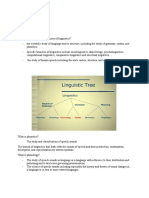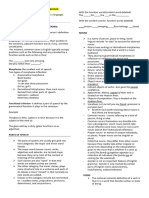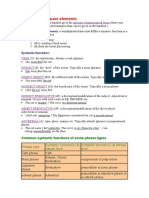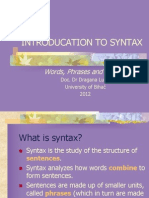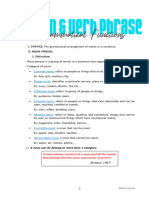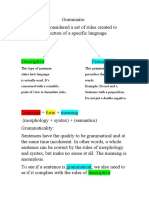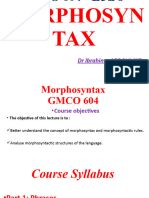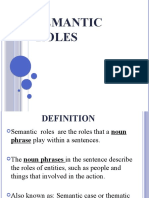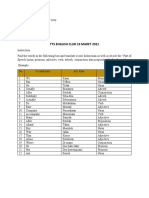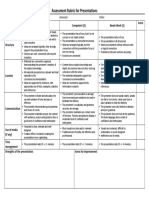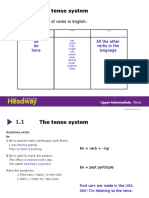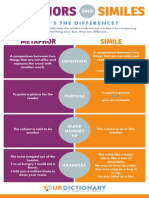0% found this document useful (0 votes)
8 views4 pagesSentence Structure-Syntax
The essay discusses the structure of English sentences, focusing on the roles of subjects and predicates, as well as the hierarchical relationships between sentence constituents. It categorizes various elements such as nouns, adjectives, and verb phrases, explaining their functions and dependencies within sentences. Additionally, it examines adverbials, their types, and how they provide contextual information about actions in a sentence.
Uploaded by
Elias D. PassangezeCopyright
© © All Rights Reserved
We take content rights seriously. If you suspect this is your content, claim it here.
Available Formats
Download as DOCX, PDF, TXT or read online on Scribd
0% found this document useful (0 votes)
8 views4 pagesSentence Structure-Syntax
The essay discusses the structure of English sentences, focusing on the roles of subjects and predicates, as well as the hierarchical relationships between sentence constituents. It categorizes various elements such as nouns, adjectives, and verb phrases, explaining their functions and dependencies within sentences. Additionally, it examines adverbials, their types, and how they provide contextual information about actions in a sentence.
Uploaded by
Elias D. PassangezeCopyright
© © All Rights Reserved
We take content rights seriously. If you suspect this is your content, claim it here.
Available Formats
Download as DOCX, PDF, TXT or read online on Scribd
/ 4








